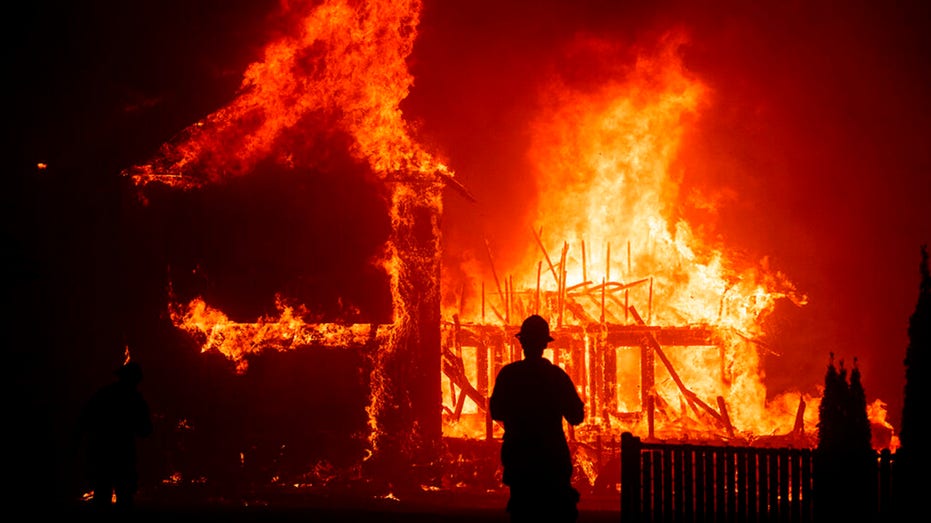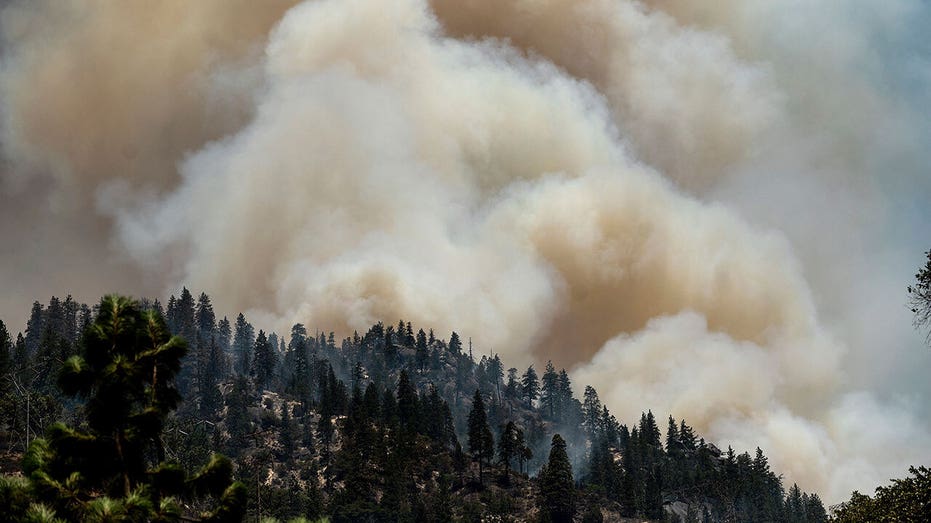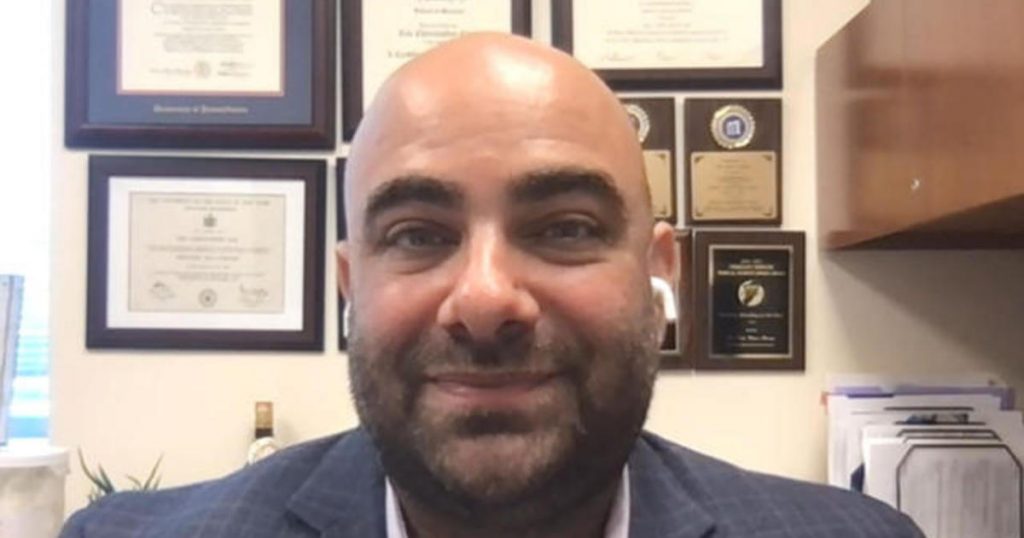FOX Business’ Connell McShane reports from Morrison, CO amid a series of wildfires plaguing western states.
It’s a story told increasingly frequently over the last couple of years: California homeowners are left scrambling after being dropped by their longtime insurance carriers.
The impact of continually worsening wildfires and drought in the Golden State – as well as billions of dollars worth of insurance claims – have led to policy non-renewals for tens of thousands of homeowners.
According to the California Department of Insurance report, 2019 saw a 31% increase in non-renewals by insurance companies statewide, including a 61% increase in ZIP codes having an area with moderate to very high fire risk and a 203% increase in the top 10 counties with the highest exposure of homes in high to very high fire risk.
Additionally, homeowners with wildfire risk often pay higher premiums than those without wildfire risk and the department said that a recent rate filing with a requested overall increase of 6.9% resulted in an impact to policyholder premiums ranging from -30% for policyholders with no wildfire risk to +80% for policyholders with a high wildfire risk.
CONSUMERS COULD SEE PRICES RISE AS WESTERN DROUGHTS WORSEN
With private insurance companies unwilling to issue new policies to homeowners with sky-high premiums and in “risky areas,” many are resorting to state-run insurance programs like the “FAIR Plan,” which The Sacramento Bee deems the state’s “insurer of last resort,” and still have to pay much more than they had been before.
With an extremely active wildfire season this year, blazes have burned 1,358,145 acres in California, forcing evacuations and decimating whole communities.
The National Interagency Fire Center reports that there are currently 11 fires burning right now as thousands of wildland firefighters and support personnel work to battle the flames.

FILE – In this Nov. 8, 2018, file photo, a home burns as a wildfire called the Camp Fire rages through Paradise, Calif. In an order dated July 12, 2021, Los Angeles County Superior Court Judge Mary Strobel ruled that California Insurance Commissioner (AP Photo/Noah Berger, File)
The state’s California Fair Access to Insurance Requirements Plan, or FAIR Plan’s, Dwelling Fire Policy is a named peril policy designed to “offer a temporary solution” for those threatened by fire, lightning, smoke and internal explosion.
The Department of Insurance notes that extended coverage may be added to the policy and that policyowners “may want to consider purchasing a separate Differences in Conditions (DIC) policy in addition to the FAIR Plan policy” to “fill in gaps” between the FAIR Plan and a “traditional homeowners’ insurance policy.”
In 2019, there was a 36% increase of FAIR Plan policies statewide, including a 112% increase in ZIP codes having an area with moderate to very high fire risk and a 559% increase in the top 10 counties with the highest exposure of homes in high to very high fire risk.
At the end of July, Superior Court Judge Mary H. Strobel ruled that the Department of Insurance Commissioner Ricardo Lara could order the FAIR Plan to begin covering more things, including liability related to damage on the property – something he had tried two years before.
In 2019, the FAIR Plan Association sued, arguing that the order was illegal because state law required they provide just “basic property insurance” and that expanding coverage would hurt the private insurance market.
“California consumers win when they have greater options for insurance coverage, which is why I ordered the FAIR Plan to modernize its coverage 18 months ago,” Lara said last month. “The FAIR Plan and the insurance companies who control it need to move forward to implement this needed coverage option as soon as possible.”
GET FOX BUSINESS ON THE GO BY CLICKING HERE
In a statement responding to the ruling, the FAIR Plan said the court had made it clear that the Department of Insurance could not compel the FAIR Plan to issue a comprehensive HO-3 policy, noting that additional coverages typically found in a homeowners policy are available in the form of a DIC and that the commissioner’s order would have “led to unnecessarily increased rates and disruption in the voluntary insurance market.”
“The Los Angeles Superior Court made clear that Commissioner Lara does not have the authority to require the FAIR Plan to offer a comprehensive HO-3 policy,” Spencer Kook of Hinshaw & Culbertson, LLP, lead attorney representing the California FAIR Plan in the litigation, said. “Instead, the court clearly determined that Commissioner Lara must set aside those aspects of his 2019 orders requiring the FAIR Plan to offer an HO-3 policy as well as his attempt to prohibit the FAIR Plan from charging fees to cover the cost of payment options. This decision reaffirms the FAIR Plan’s critical role as a reliable safety net for Californians to protect against loss from fire, especially for those who live in the areas of the state at greatest risk of wildfire.”
Where the FAIR Plan Association and Lara agreed, the group said, is in their commitment to consumers and shared goal of addressing the insurance crisis as climate change increases wildfire risk for California homeowners.
“We look forward to collaborating with the policymakers, including the commissioner, to identify ways to increase options for consumers within the voluntary insurance market,” the FAIR Plan Association said.
In August, the Fair Plan announced that it had entered a new partnership with Zesty.ai to be able to better assess wildfire risk using aerial imagery and artificial intelligence using the “Z-FIRE” predictive wildfire risk model.

Smoke rises from the Dixie Fire burning along Highway 70 in Plumas National Forest, Calif., on Friday, July 16, 2021. (AP Photo/Noah Berger)
“Insurance carriers worried about skyrocketing losses due to increased wildfire activity felt compelled to stop writing business in certain high-risk areas, which resulted in the FAIR Plan receiving more applications for coverage than ever,” Anneliese Jivan, president of the FAIR Plan, said in a release. “We can no longer rely on 30-year-old technology to understand modern climate phenomena. We spent a considerable amount of time evaluating several models and found Zesty.ai’s Z-FIRE outperformed the others by a wide margin. With Z-FIRE, we can charge more accurate premiums that truly reflect a property’s risk and reward homeowners for mitigation efforts they make to harden their homes.”
How this technology will impact homeowners remains to be seen, but the hope is that the data will stop insurers from writing off entire ZIP codes.
From 2015 to 2019, state data shows that insurance companies declined to renew nearly 350,000 policies in areas at high risk for wildfires – something Lara has been working to combat.
The Sacramento Bee reported last week that Lara had been negotiating with the industry over a plan that would have insurers reward communities that have “hardened” themselves against fire threats.
After a historic 2020 wildfire season, the commissioner issued a mandatory one-year moratorium on insurance companies non-renewing or canceling residential property insurance policies, effectively freezing insurance non-renewals for 2.4 million affected policyholders.
This year, Lara announced that he would do the same for more than 25,000 policyholders impacted by the Beckwourth Complex Fire and Lava Fire in the counties of Siskiyou, Plumas and Lassen.
California wineries fear wildfire season as owners struggle to find insurance coverage. FOX Business’ Lydia Hu with more.
“No one should have to scramble to find fire insurance after suffering the effects of a wildfire. I created this new protection after learning from wildfire survivors how some insurance companies dropped their coverage even as they worked to recover,” he said in a statement. “By forbidding insurance companies from issuing non-renewals and cancellations for one year, homeowners have more time to get back on their feet. This is one part of a larger solution for consumers that includes working to increase insurance protections and increasing market competition to help protect consumers.”
Lara said he would continue to work with Gov. Gavin Newsom’s office and first responders to identify areas where additional moratoriums may also be issued.
The one-year protection lasts exactly one year from the date of the governor’s emergency declaration and applies to all residential policyholders within the affected areas who suffer less than a total loss, including those who suffer no loss.
CLICK HERE TO READ MORE ON FOX BUSINESS
The insurance department said those who suffer a total loss have additional protections under the law.
Last week, Lara announced several new wildfire insurance protections for survivors, including that residents under mandatory evacuation for wildfire receive at least two weeks of additional living expenses; survivors do not have to use a company-specific inventory form for lost contents; insurance companies can no longer deduct land value when paying an insurance claim if a wildfire survivor chooses to relocate; insurance companies cannot restrict additional living expenses if a home is rendered uninhabitable due to a wildfire or other covered peril; insurance companies must offer a 60-day grace period on payment of policy premiums for properties located within the affected emergency area; and insurance companies must provide an advance payment of no less than four months of additional living expenses if the consumer requests it.
Under the commissioner-sponsored AB 2756, insurance companies must also inform consumers in writing if the policyholder purchases a policy that does not cover the peril of fire or if the company removes the peril of fire when the policy is renewed. Residential fire policies that provide dwelling structure coverage are also required to include a minimum of 10% of primary dwelling limits as an additional amount to help consumers rebuild with upgraded building codes.
The Associated Press contributed to this report.


